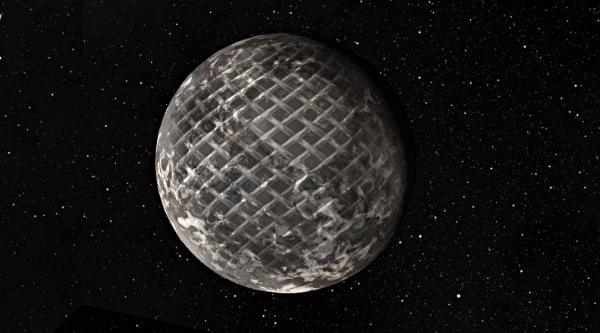BY LETTER
Ithiplumo (GJ 3379)
Abandoned Diamond Belt aioid colony |
 Image from Steve Bowers |
Ithiplumo - Data Panel | |
| System | Location: - Distance from Keid: 8.123 ly (J2000) - Distance from Sol: 16.99 ly (J2000) - Constellation: Orion |
|---|---|
| Star | Names: Ithiplumo, Giclas 99-49 (G 99-49), GJ 3379, LTT 17897 Physical characteristics: - Mass: 0.237 x Sol - Radius: 0.249 x Sol - Temperature: 3,297 Kelvin - Luminosity: 0.008630 x Sol (bolometric) - Spectral type: M3.5 Ve - Rotation period: 1.809 days - Age: 2.34 billion years System: 1) Charybdis: Apnean Semi-major axis = 0.02442 AU, Orbital period = 2.863 days, Eccentricity = 0.008, Mass = 0.0409 x Earth, Radius = 0.3852 x Earth |
| Reached | Reached: Approximately 500 AT by ahumans. Resettled in 1235 AT by colonists aboard the Federation colony ship Whiddhar Korskumma. |
Ithiplumo was named in honor of Ithiplumo Team, the early Federation researcher team who first described the ahuman structures found across the system via the Uranian System Interferometry (SYY) in 987 AT. The star was also nicknamed Scylla, after the counterpart of Charybdis from the same Old Earth legends, but the name went out of popularity by the late First Federation.
Ahuman
An ahuman colony ship departed from the Solar System towards this star in 327 AT. Around fifty years after arrival, a massive manufacturing program commenced on Charybdis, a small, hot rocky planet orbiting this star. Structures of unknown function were constructed, but these had been abandoned long before First Federation explorers reached this system over seven hundred years later.It is believed that these structures were used to launch von Neumann probes outwards, but no other evidence of the builders have ever been found and no groups claiming descent from Charybdis have been contacted. The defense systems appear to be similar to those found on Duoden Torus.
Related Articles
Appears in Topics
Development Notes
Text by Anders Sandberg
additional material by Steve Bowers and The Astronomer
Initially published on 24 September 2001.
Text update (2022-02-20, by The Astronomer)
additional material by Steve Bowers and The Astronomer
Initially published on 24 September 2001.
Text update (2022-02-20, by The Astronomer)






